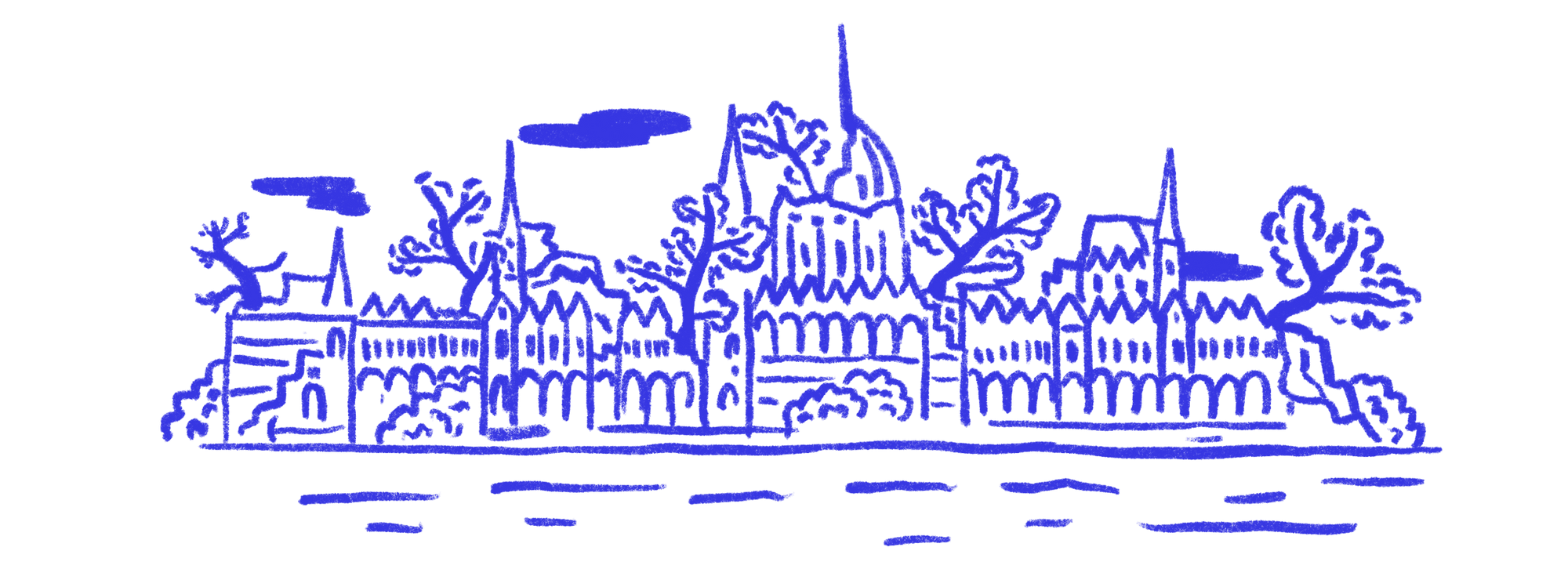People, words, buildings, stories, and moods—all of these and more have contributed to creating the Budapest we know today over the past 150 years. To mark the anniversary, we asked people who are connected to the capital by a thousand (or at least a hundred and fifty) threads about the past and future of Budapest and their personal connection to the city.
Sándor Bardóczi, Chief Landscape Architect of Budapest
What would you have been in Budapest 150 years ago?
Looking at the social mobility of 150 years ago, I would most likely have been a farmer somewhere in Hajdúság or Borsod counties, along the Tisza, owning a small piece of land, and would never have made it to Budapest. But if I had to put myself in someone else’s shoes and mention a position similar to the one I hold now in the capital, I would have been Emil Fuchs, who was the first chief gardener of Pest-Buda between 1867 and 1892, then of the unified capital. I would probably be occupied with the landscaping plans for Ferenc József Square (today’s Széchenyi István Square), the urban planting of acacia trees, or the completion of the Museum Garden.
The differences in geography, history and development still create tangible contrasts between Buda and Pest. What do you like about both?
In Buda, the green wealth that’s preserved to this day, the topography, the citizen mentality, and the livable living environment. In Pest, the creative energy, the civil consciousness, and the potential for green development. And all in all, I love the land of frontiers on which this city is settled, at the meeting point of hills, waters, plains, and marshes. Humans are frontier-loving animals, researchers say. And there are plenty of frontiers here.


What are the best and worst things about Budapest?
The best thing is the abundance of creative energy, progressive ideas, and diversity that is concentrated in the many layers of the city, and that it always offers something for discovery. The worst thing is that it is mainly concentrated here, and even the cities with county status are so much smaller in scale that it makes the everyday reality of the country head-heavy and not a balanced network of hubs. The draining effect is too great.
Which image and/or song best describes Budapest for you?
Budapest by Tamás Cseh, János Másik, and Géza Bereményi.



If you had to recommend a book about Budapest that might also be available in a foreign language, which would it be?
I think I’d recommend György Spiró’s Feleségverseny (Wife Contest), a laugh-and-cry type dystopian social satire about a Hungarian society that—and this is a terrible realization—started to become reality in the decade following its publication. It features a lot of absolutely recognizable Budapest locations, just in a different way. Margaret Island there is Prison Island, the Kondorosi swimming pool there is a disguised greenhouse, the main source of income for the Hungarian Communist Kingdom, where genetically modified ragweed is grown. I could go on, but I don’t want to spoil it.
Who or what is the most ‘Budapester’ person or thing for you?
I won’t pick one, but I will mention a few who have in common that they have done, or are doing something for the city. They are citizens in a good sense, with a sense of ownership. And precisely so as not to offend the living by omitting someone from the long list, I will mention a small group of the deceased. In my opinion, the greatest punk Budapest urban planner was Ferenc Reitter, one of the most successful garden artist was Ármin Petz Sr., the best chief gardener was Károly Räde, the best green space manager was Dezső Radó, and the best architectural duo was the firm of László Lauber and István Nyiri. And the biggest visionary in Budapest was a certain Archduke Joseph Anton of Austria, the palatine of Hungary. I have deliberately chosen names that are perhaps less well known to the public apart from the palatine, to show how many forgotten, hidden treasures the city has.
If you had to live in one of the region’s other capitals instead of Budapest—Vienna, Belgrade, Ljubljana, Bratislava, Prague, Warsaw, or Zagreb—, which one would you choose?
Ljubljana or Vienna. Both were the green capitals of Europe, and both have a lot to teach us. The atmosphere and the citizens’ mentality in these cities are the closest to me of all those on this list.

How do you see Budapest in another 150 years?
Climate anxiety effects me as well, the more data I learn about predicted climate scenarios, the more I can imagine that not only Budapest but the whole of human civilization will be gone in 150 years’ time. The planet will survive, of course, and so will life, it is just that this economically growth-oriented, planet-destroying evolutionary dead end (humans) will be forced out by the ecosystem. If that happens, Budapest in 150 years will be a post-apocalyptic landscape slowly reclaimed by nature, and maybe in a few hundred million years some species more intelligent than ours will wonder what a clueless race humanity must have been.
Portrait: Sándor Bardóczi
Graphic design: Roland Molnár

A living brand from a living village | Contemporary heritage in Hollókő











